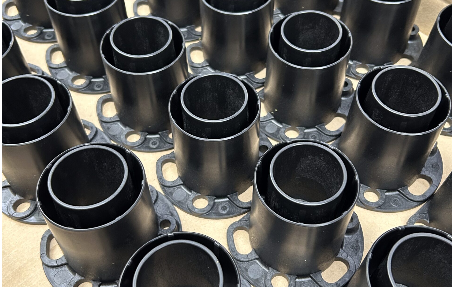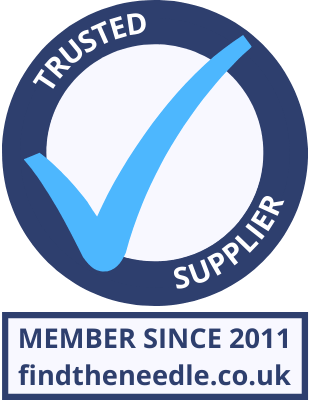 Add My Company
Add My Company
The FAQs of Plastic Injection Moulding

When you’re weighing up your manufacturing options for a plastic product, you’ll almost certainly encounter injection moulding.
Injection moulding is an exceptionally versatile process that creates everything from medical devices to automotive parts. Understanding exactly how it works helps you make informed decisions, from design through to production.
Here, we’ll dive deep into some important injection moulding FAQs to help you evaluate this technique BEC joins Made in Britain and Sedex
and determine whether it’s appropriate for your products.
What Are the 5 Steps of Plastic Injection Moulding?
The injection moulding process takes place over several stages.
Each step builds on the last, creating a seamless production cycle that can efficiently produce thousands of identical parts. The five main stages are:
Clamping: The mould tool halves close under high pressure, creating a secure cavity that withstands injection forces while maintaining a perfect seal.
Injection: Plastic pellets melt at controlled temperatures; the shot weight is measured by a rotating screw before being injected by a hydraulic system.
Cooling: The plastic sets completely inside the tool, with timing varying by material and part thickness. Cooling channels help maintain optimal temperatures.
Ejection: Various mechanisms, primarily ejector pins, remove the solid part. Correct placement of ejectors will avoid marking of cosmetic faces.
Inspection: Quality assurance examine each part for defects like sink marks, weld lines, warping or flash, indicating if process adjustments are needed.
What Are Plastic Injection Mould Tools Used For?
Mould tools are precision-engineered steel components that create the exact shape of your finished product from inside two halves- think of it like two ice cube trays coming together. They control how molten plastic flows, cools and sets, directly affecting part quality and production speed.
A well-designed tool ensures consistent parts while incorporating features that enhance both form and function. Here are the main components of a well-designed tool:
Complex geometries, including undercuts and internal details
Multiple cavities for higher production volumes
Textured surfaces from gloss to matte
Date stamps and product identification
How Are Parts Removed From an Injection Mould?
Part removal needs careful consideration during tool design. The wrong ejection method can damage parts or slow production, while the right choice enhances efficiency and quality.
Different parts demand different solutions based on their shape, size and complexity. These might include:
Ejector pins for standard parts requiring direct force
Air-assist systems that gently free thin-walled components
Stripper plates that smoothly release deep profiles
Robot systems for precise handling of complex parts
Core pulls that safely extract internal features
Our toolmakers select and position these features based on decades of experience, ensuring reliable part removal without compromising quality.
Understanding Injection Cycles
An injection cycle measures the time taken to produce a single plastic part.
Precise control of timing, temperature and pressure during each stage determines both part quality and production efficiency. A typical cycle includes:
Mould closing and hydraulic pressure build-up to prevent material leakage (typically called flash)
Injection of molten plastic at carefully controlled speeds and temperatures
Holding pressure to compensate for material shrinkage
Cooling time that allows proper part solidification
Part ejection and machine reset for the next cycle
Understanding and optimising each stage of the injection cycle helps achieve faster production while maintaining quality.
The Value of Injection Moulding
Injection moulding is one of the leading manufacturing technologies, enabling the production of complex plastic parts at scale.
While initial tooling requires investment, the process delivers substantial benefits:
High-speed production of identical parts with minimal supervision
Consistent quality across millions of cycles
Compatibility with hundreds of different materials
Decreasing unit costs as production volumes increase
Together, these features make injection moulding the preferred choice for most plastic product manufacturing today.
Selecting the Right Material
Material choice fundamentally affects both manufacturing success and product performance. Each plastic brings unique properties that suit different applications:
Polypropylene offers excellent chemical resistance and low cost
Acetal maintains tight tolerances with superior wear resistance
HDPE withstands harsh chemicals while remaining tough
PET can provide glass-like clarity with good impact strength
Nylon combines high strength with excellent wear properties
Our technical team matches materials to your specific performance requirements.
Which Plastic is The Strongest?
It’s not as simple as ranking plastics from strongest to weakest. Different applications demand different types of strength – from impact resistance to tensile strength, from flexibility to rigidity.
Here’s where different plastic choices excel:
Polycarbonate provides exceptional impact resistance and optical clarity
Glass-filled nylon offers high structural and temperature strength
TPE (Thermoplastic Elastomer) combines flexibility with durability
Acetal delivers excellent wear resistance and stiffness
ABS provides good impact strength with cost-effectiveness
The key lies in matching material properties to your specific requirements. For example, a part that needs to resist shattering might use a different material than one requiring load-bearing strength or chemical resistance.
Ready to Explore Your Options?
Injection moulding is a proven, cost-effective method for producing high-quality plastic parts at scale – but success depends on the right process, materials, and tooling.
Whether you need rapid prototyping, precision engineering, or large-scale production, expert guidance ensures you get it right from the start.
At BEC Group, we don’t just manufacture parts – we collaborate with you to refine designs, optimise materials, and streamline production for the best possible results.
Contact BEC Group’s team to discuss your project and receive a no-obligation quote.
For more information on The FAQs of Plastic Injection Moulding talk to BEC Group

